THE INTERVIEW CORNER: A BROAD SPECTRUM OF ARTISTIC APPROACHES TO A GLOBAL ISSUE -AN INTERVIEW WITH DONIKA RUDI
How does the expression "diverse body/ies" resonate with you?
The expression "diverse body/ies" for me means uniqueness, the beauty of diversity, inclusion, and acceptance while embracing the differences. I can easily relate this to the sound diversity, sound world. As an acousmatic composer, my work with sounds has taught me to be even more attentive to the various sound textures, shapes and sizes. My work process starts with understanding these differences, characters, sound personalities. It continues by exploring the new textures until the creation of the piece — composed of layers, using all of the different sounds available to me, including the smallest, microscopic, tiniest sounds to the heavy, deep, low sounds. At the end, this process becomes a celebration of diversity, as each sound contributes something unique to the whole (to the composition) - the same as for the bodies, personalities, abilities and disabilities. We should understand that we all have different bodies, from fluidity to physical limitations. My goal as a composer is to create music that is inclusive of these differences and allows "each body" to be a part of the whole. Whether someone is experiencing the music through their ears, their skin, or their heart, each person's contribution but also perception are meaningful and integral to the overall experience. My focus these past few years has been on climate change and exploring new ways to experience music and allow everyone to engage with and be a part of the music, no matter their perceptual ability or background. My invitation to my work is to experience music not only through auditory means but also through other senses. We all perceive music differently. Every individual is different. Not everyone can listen the way you do. Not everyone can perceive the way you do. By incorporating different sensory experiences, I create music that is inclusive and accessible to a wider audience.
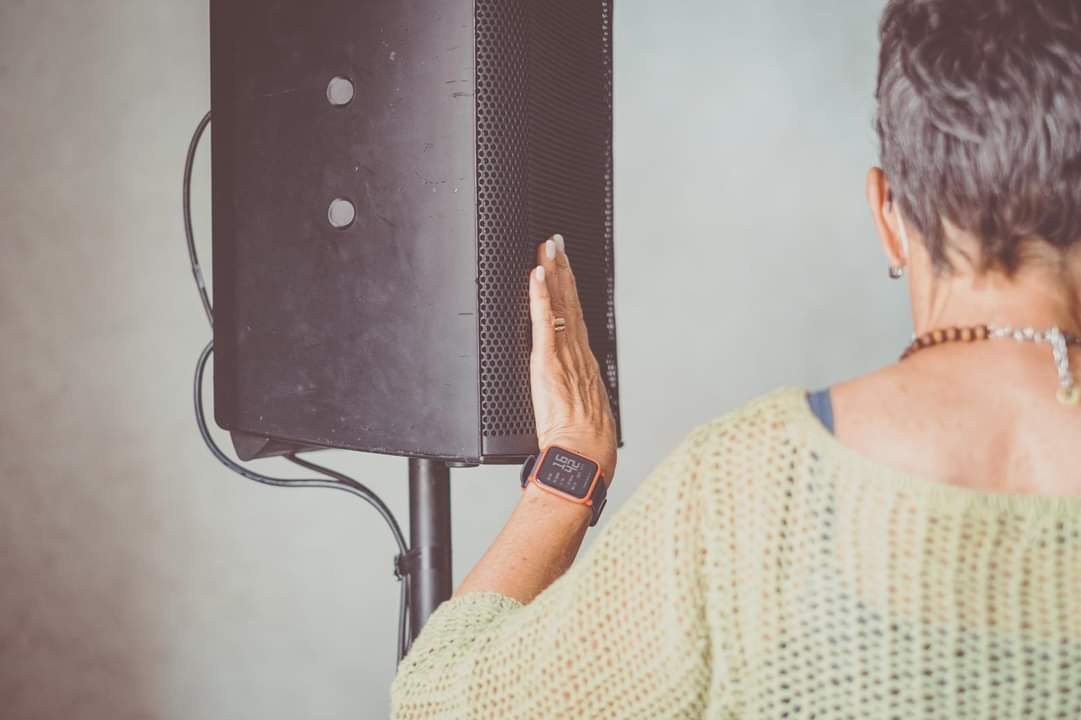
You are an IN SITU associate artist on the (UN)common Spaces project. What is your role in it? What did it bring to your artistic practice?
Being an IN SITU associate artist of the (UN)common spaces project opened new doors to the experience of working and connecting to creations in public spaces. Coming from a traditional compositorial background as a composer of instrumental, mixed and acousmatic music, I grew up artistically listening and performing my pieces indoors in concert halls, theatres and closed spaces. When invited to be an associate artist with IN SITU and create new works in public space, I discovered a completely different world of thinking. I came across a new way of working, the importance of the connection created with the audience, and I understood how their presence and interaction might change my point of view, my way of thinking and creating.
As it turned out, it was also a deeper connection with nature, city, exploration and research between the innerand outer sound world. Between 2020 and today, I had the opportunity to collaborate with other artists within the network, such as Zineb Benzekri with whom we worked on The INSANE project - a participative and immersive project mixing installations, soundscapes, and performances - and show my work at many IN SITU partner festivals, including the premieres in Kosovo at Hapu Festival in Prishtina. After all, creating is essentially this: to focus on the platform to collaborate, to be connected with European audiences, and to be present on a European scale. Being an artist and a director of a music festival of ReMusica Festival for years and coordinating the European Festivals Fund for Emerging Artists EFFEA within the European Festivals Association - EFA helped me see and analyse both sides. I have experienced that networking and exchanges lead to opportunities for new and creative cooperation, as well as collaboration between programmers and artists.
Your artistic work articulates current social concerns. What comes first in your creation process? Is your artistic approach predominant, or do you build around the message you want to convey?
I would say both, as it really depends on the context. As a composer also engaged in music for theatre and film, and as a member of FeBeME-BeFEM (1), I receive many invitations to compose for different occasions. In those cases, it is the context that defines the working process. In other cases, such as during my research, I was focused on three specific topics — climate change, sound experiences for the deaf community, and visual pieces. Rather than heading straight to work, I conducted research, discussed, read, listened and brainstormed beforehand and was never sure if what I was creating would have an impact later on or not. The process is always fun. I like collecting sound materials, start treating the sounds, changing the form of a sound, working in layers, coming up with new materials, sound shapes, and different textures, and, then, I slowly start building. And as I shape and create a piece, I become more demanding about the dramaturgy, the technical details, and the logic of the piece.
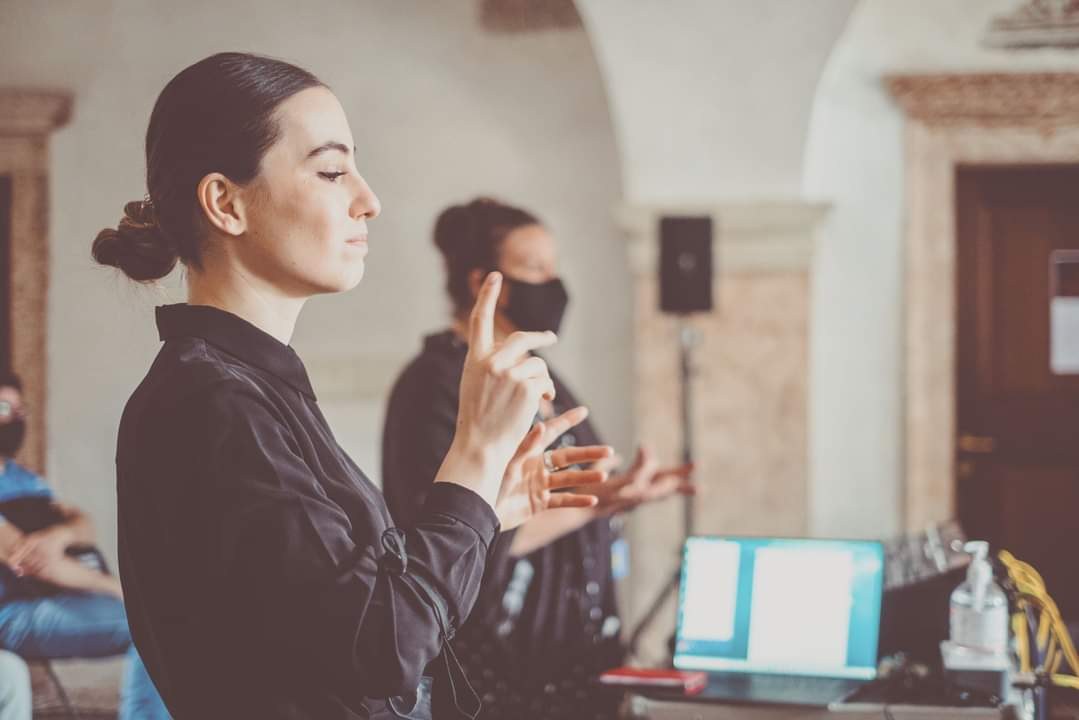
You are currently developing the project “Laments of the Earth”, a cycle of audiovisual works addressing the topic of climate change and sound experiences for the deaf community while combining sign language and dance. Can you let us know more about this project and what you would like to achieve with it? How are you expecting the audience to engage with it?
The idea of the Lament of the Earth started when I saw the graphics of warming stripes, which visually portray long-term temperature changes on the Earth's surface. The initial piece of the Lament, an acousmatic piece, was created based on this graphic. The text "Cry of the Earth" by the dramaturg Doruntina Basha, brought by the soprano, sign language, dance and the huge costume representing the Earth were elements that came later. It was a very long process with numerous workshops, including the one I had with the deaf community during the Pergine Festival in Italy and the Hapu Festival in Kosovo. Explorations of new ways of perception were very helpful to realise that I want to focus on inclusion and create pieces open to all for a wider public, with no restrictions and no specific conditions required to be engaged. My aim with this cycle of visual pieces is to transmit the emotion and experience of the sounds through movements, dance and “visual vernacular” (2). My colleagues from the deaf community, present at the premiere of the Lament of the Earth in Kosovo who came to congratulate me with smiles on their faces, filled me with joy. It is not a project created for them, but a project we have created together. In the end, the project had a huge impact, more than I imagined.
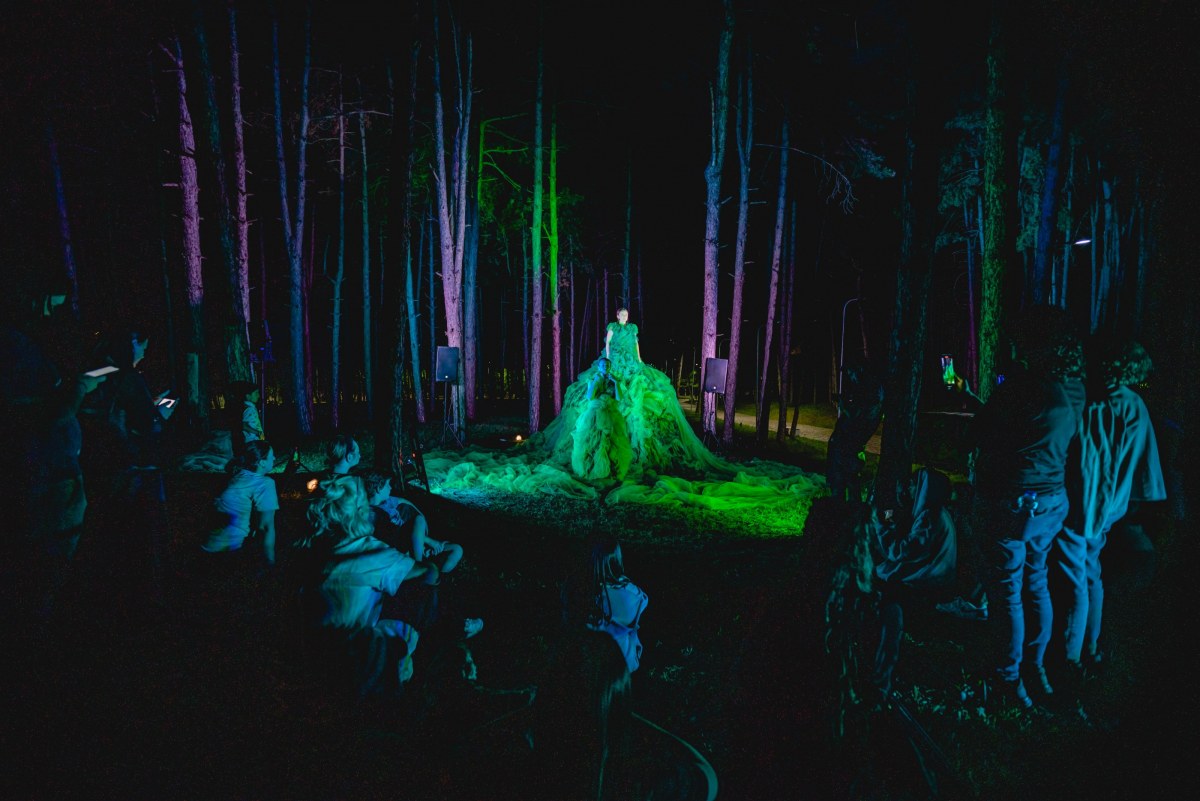
Would you say that inclusivity and the connection to a diverse audience is a topic addressed by many artists around you at the moment? If so, why?
If we speak about climate change, it is an actual subject and an alarm for all of us. As living beings on this Earth, we must react to it and take action as soon as possible. As for the topic of the deaf community, there is a thin line… I do not like defining and categorising the differences. As a human of this world, I see beyond this - inclusion means embracing differences, and we will only achieve this when we stop categorising and labelling, when we embrace any kind of diversity when we lift barriers and allow a better and free circulation between countries.
Do you believe it is the responsibility of artists to raise awareness on these issues? Do you believe creation in the public space can make a long-term difference?
Through art, we have the power to change and bring up these issues, open dialogue, inspire, and take action. Through creation in the public space, we are a voice and communicator. We connect directly with the audience. We interact, and the public becomes part of the creation: it is a synergy. It is a form of activism through which we can bring visibility and raise awareness of different issues, including the promotion of inclusivity, to break down barriers between cultural diversity, and move further toward a more connected and harmonious society.
1 Belgian Federation for Electroacoustic Music
2 Visual Vernacular is a unique physical theatre technique, with elements of poetry and mime, primarily performed by deaf artists. This powerful story telling style combines strong movement, iconic sign language signs, with gestures and facial expressions, to capture the world in all its visual complexity.

Donika Rudi is a Brussels-based, Kosovar composer specialised in acousmatic, electroacoustic music. Since 2010 she is the Artistic Director of ReMusica Festival in Kosovo, associate artist at IN SITU – European Platform for artistic creation in public space, led by Lieux publics (2020-2024). She works as coordinator of the European Festivals Fund for Emerging Artists – EFFEA within EFA and she is member as composer within FEBEME – BEFEM (Fédération belge de musique électroacoustique) and CEC (Canadian Electroacoustic Community).



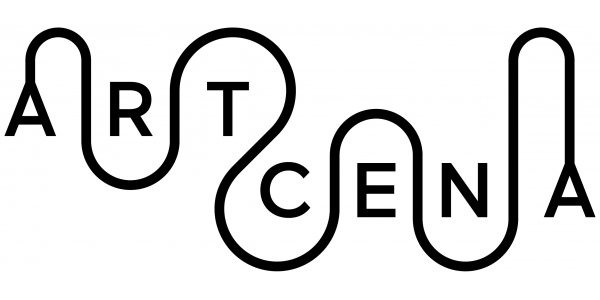

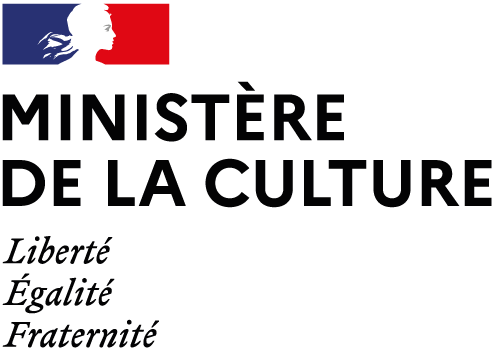
write us: infocircostrada@artcena.fr